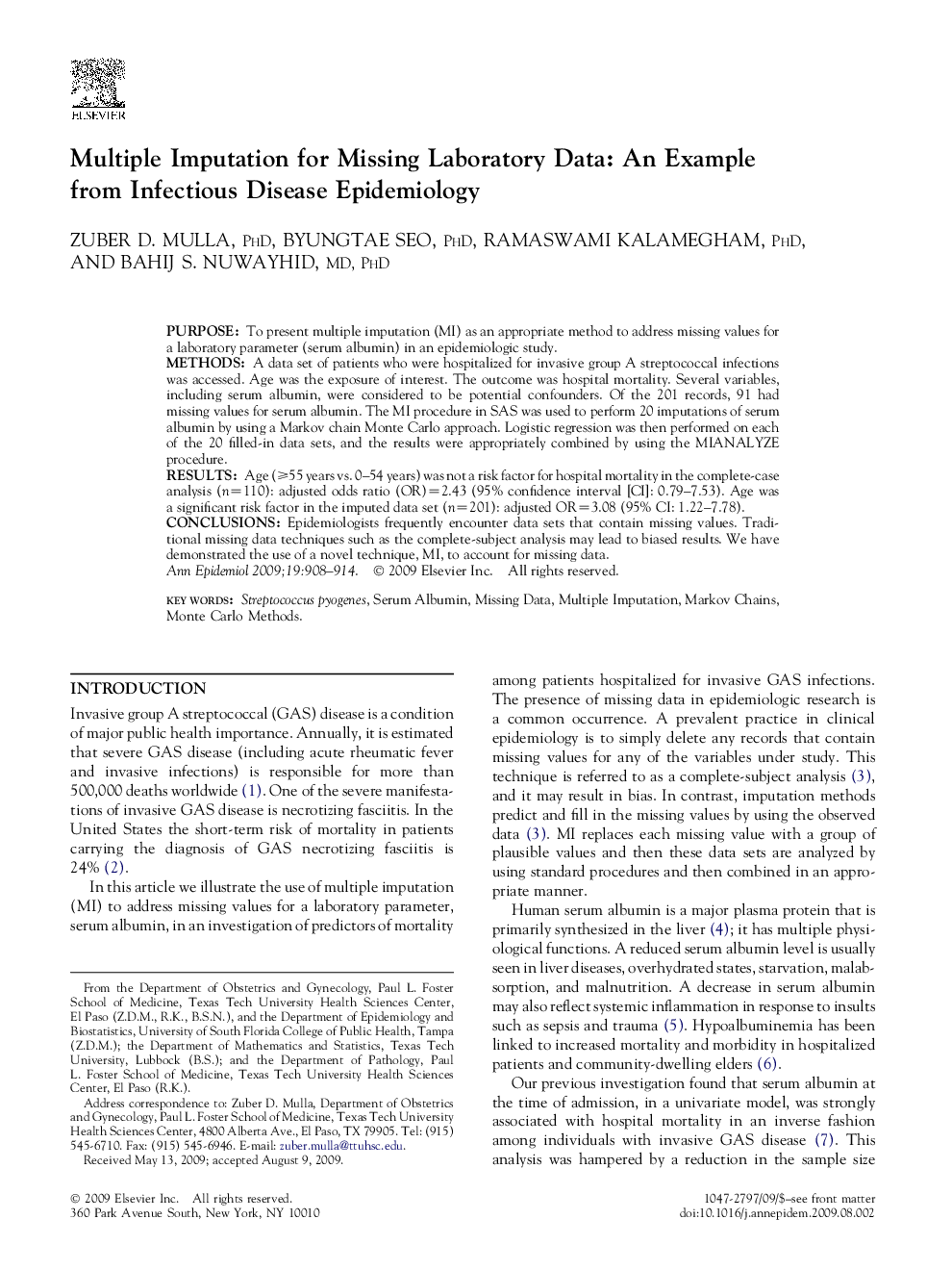| Article ID | Journal | Published Year | Pages | File Type |
|---|---|---|---|---|
| 3444896 | Annals of Epidemiology | 2009 | 7 Pages |
PurposeTo present multiple imputation (MI) as an appropriate method to address missing values for a laboratory parameter (serum albumin) in an epidemiologic study.MethodsA data set of patients who were hospitalized for invasive group A streptococcal infections was accessed. Age was the exposure of interest. The outcome was hospital mortality. Several variables, including serum albumin, were considered to be potential confounders. Of the 201 records, 91 had missing values for serum albumin. The MI procedure in SAS was used to perform 20 imputations of serum albumin by using a Markov chain Monte Carlo approach. Logistic regression was then performed on each of the 20 filled-in data sets, and the results were appropriately combined by using the MIANALYZE procedure.ResultsAge (≥55 years vs. 0–54 years) was not a risk factor for hospital mortality in the complete-case analysis (n=110): adjusted odds ratio (OR)=2.43 (95% confidence interval [CI]: 0.79–7.53). Age was a significant risk factor in the imputed data set (n=201): adjusted OR=3.08 (95% CI: 1.22–7.78).ConclusionsEpidemiologists frequently encounter data sets that contain missing values. Traditional missing data techniques such as the complete-subject analysis may lead to biased results. We have demonstrated the use of a novel technique, MI, to account for missing data.
